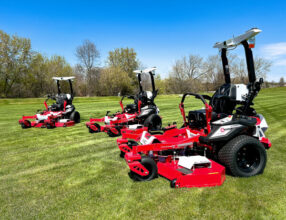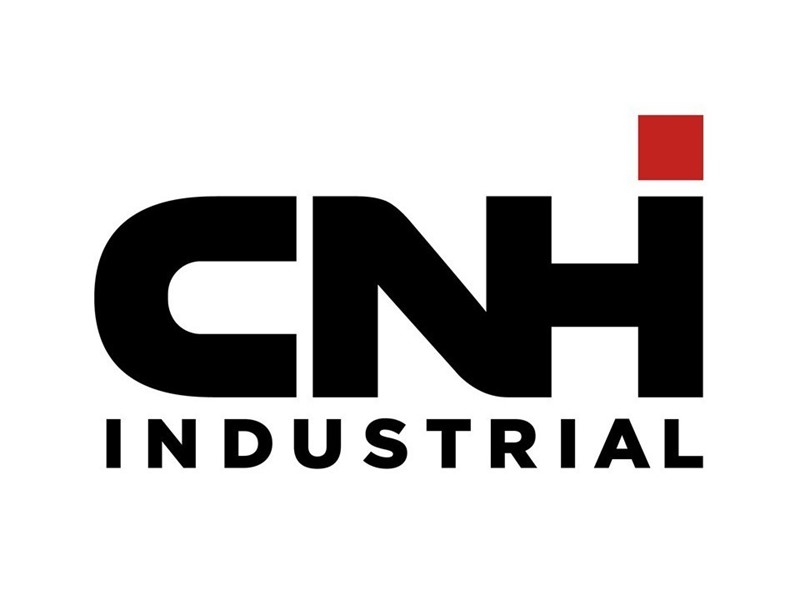Increasing Shop Profitability Series (Part VI): Technician wages, incentives, commissions and accountability
Sixth article in a series
By Jim Yount
Cornerstone principle to remember: “When equipment retailers build a profitable service department and provide better wages and benefits, experienced, skillful and certified technicians will knock on their door.”
What does the word “wages” mean? If you don’t know the real meaning, you could be misled or even deceived into paying more than a job is worth. Paying more than you receive in return for wages paid, cuts into your profit. Paying less than what the job is worth, usually results in a slowdown in work productivity and could lead to demoralized behavior. The worst situation is having an employee hang around your store for 20 years or more.
According to Webster’s New World Dictionary, the definition of “wages” is: Money paid to an employee for work done, and usually figured on an hourly, daily or piecework basis.
Webster’s also defines “incentive” as: Something that stimulates or encourages one to take action, work harder, and produce more. An example: Employees willing to work smarter — becoming more efficient while producing value-added services within a given time frame — deserve to be paid more.
In the past few years, we have seen technician’s annual take-home earnings range from a low of $22,000 to more than $70,000. Dealers tell us technician wages and benefits in their specific marketing area range from $31,000 to $37,000.
Compensating full-time and part-time, experienced and qualified technicians is a collage of formulas. They are paid in various ways:
By the hour with paid vacation and sick leave.
By the hour without company-paid benefits.
By the hour with an increasing hourly wage as billing efficiency increases.
By the hour plus commission when working on customer equipment.
Commission rate is usually part of the shop’s hourly labor rate.
Commission based on a percentage of the shop’s hourly labor rate.
By the job using a flat-rate schedule.
Regardless of how technicians are compensated, each should be held accountable for a predetermined measure of productivity. Consider your responsibility.
Company pays the wages
Mandatory benefits, FICA, etc.
Sponsored benefits such as health care and retirement
Training, travel, lodging, meals and wages
Uniforms
You should expect and receive equitable production in return for your investment. However, the only way you will receive equity is to manage and enforce accountability.
INCENTIVE: Pay scales, accountability and performance
Paying an incentive is like a coin; it has two sides. The original purpose, face (heads) side of the coin, for paying incentives is to stimulate employees to increase efficiencies and perform like a pro at all times. In return for performing at a higher level of efficiency, employees earn additional income. (“Earn” is the key word.) Side two (tails) of the coin, in return for paying incentives, the company increases sales revenue and earns additional profit.
If you have not used incentives, you may be surprised to learn that incentives do not work for all employees. Some employees refuse to be motivated, stimulated, inspired, or held accountable. Usually their performance is rated as MDR (minimum daily requirement), which is consistent with taking vitamins.
INCENTIVE NUMBER ONE: Paying incentives for increased billing efficiency (for experienced and qualified technicians)
Terms and conditions
We recommend establishing two performance levels of efficiency for full-time, qualified technicians working a standard 40-hour workweek.
Minimum acceptable level of efficiency is 50 percent. That’s equal to billing 4 hours to customers of an 8-hour workday. Technicians performing at less than 50 percent may need additional training or other means of motivation.
Professional level of efficiency begins at 55 percent with an acceptable annual level of at least 65 percent. Top-performing technicians will be producing at an efficiency level between 75 and 85 percent.
Other terms and conditions
Service department has a constant flow of work orders.
There are no other duties required of technicians.
Incentive formula is payroll hours vs. hours billed to customers.
Incentives may be tabulated according to established pay periods.
As we proceed, it is important to remember, the following example of hourly wage is for instructional purposes, and may not be indicative of your market or dealership needs.
For this exercise, we will use a competitive, fair market, wage per hour of – – – – – $15
Our technician working a standard 40-hour week will earn – – – – – – – – – – – – – – – -$600
Incentive pay scale below increases technician’s hourly pay rate, as billing efficiencies increase during the pay period. When technician achieves:
55-percent efficiency, technician’s hourly wages increase to – – – – – – – – – $15.50
60-percent efficiency, technician’s hourly wages increase to – – – – – – – – – $16
65-percent efficiency, technician’s hourly wages increase to – – – – – – – – – $16.50
70-percent efficiency, technician’s hourly wages increase to – – – – – – – – – $17
75-percent efficiency, technician’s hourly wages increase to – – – – – – – – – $17.50
80-percent efficiency, technician’s hourly wages increase to – – – – – – – – – $18
85-percent efficiency, technician’s hourly wages increase to – – – – – – – – – $18.50
For purpose of measuring an incentive earning and cost impact report, we will use a service department’s hourly labor rate of $75.
Completing a service department earning and cost analysis, with one high-performing technician working a 40-hour week, reveals the following when efficiencies are at 85 percent, as compared to a 50-percent minimum acceptable efficiency.
Look at the numbers at 85-percent billing efficiency.
Company billed 34 hours to customers at $75 per hour earning:
$2,550
Technician earnings at $18.50 per hour for 40-hour week:
$740
Company profit after deducting technician wages:
$1,810
Technician annual income, not including health benefits and retirement:
$38,480
Look at the numbers at a 50-percent billing efficiency.
Company billed 20 hours to customers at $75 per hour earnings:
$1,500
Technician earnings at $15 per hour for 40-hour week:
$600
Company profit after deducting technician wages:
$900
Technician annual income, not including health benefits and retirement:
$31,200
Revenue gain when comparing 85-percent to 50-percent billing efficiency.
Company’s additional profit is:
$910
Company’s additional cost in technician wages is $3.50 per hour for 40 hours:
$140
Question: Is it worth $140 incentive pay to earn an additional $910? The only answer is — of course.
Final questions: “Is it worth the effort, and will you do it?”
Four important considerations
Technicians who are required to do other duties are to be given credit for time spent while assembling equipment for the sales department or engaging in other non-technical-related duties. Suggest technicians keep a log book.
The most effective way to track tech time spent assembling equipment for the sales department is to write a service work order for each job.
Technicians doing rework jobs (come-backs) will lose billing efficiency hours equal to the hours spent reworking a job.
Technician’s actual payroll hours are not affected by rework hours. Time clock payroll hours must be paid.
EXAMPLE: If the rework job takes three hours, the technician will lose three hours of billing efficiency.
Never fail to take time to explain to technicians that opportunities exist, and it’s possible to earn an additional $7,000 or more in annual income, provided they are willing to do what is necessary to increase personal billing efficiency.
During peak lawn mowing season, it is not uncommon for technicians to work on Saturday. Let’s assume the technician is performing at a 70-percent billing efficiency. The technician is earning $17 per hour for an 8-hour day, or $136. At half of a base time clock wage of $15, that’s another $7.50 for 8 hours, or $60. Total earnings for working on Saturday are $196. Working 10 Saturdays during the peak season months, the technician will earn an additional $1,960. Total additional income is $8,960. The technician is now in reach of adding another $10,000 to annual earnings.
I spoke with one of our customers who has a technician that increases his earnings above $60,000 by taking advantage of working on Saturdays when work is available.
INCENTIVE NUMBER TWO: Paying commissions on parts and accessories (for small shops where the technician is the service writer)
Now is the time to ask: “Do you know your sales ratio for parts and accessories sold, as compared to labor dollars in revenue?” Here is an example of where we are going with this question. If the service department’s total revenue for last year was $200,000, and parts and accessory sales were $20,000, your parts and accessory ratio is 10 percent. Labor sales were $180,000, or 90 percent of total department revenue. Here is the next question: “What should the ratio of parts and accessories sales dollars be as compared to total department revenue?” What we know is 10 percent is much too low.
We suggest a “good” to “very good” ratio for sales of parts and accessories to labor income is 25 to 35 percent of the total service department revenues. Let’s consider that the annual labor sales of $180,000 stays the same for the coming year. However, you initiate a program that pays technicians a commission on the sales of parts and accessories used to complete a work order. As a result, at the end of this coming year, the ratio for the sales of parts and accessories grew from $20,000 to $40,000. Total revenue for the year becomes $220,000. The ratio of parts and accessory sales, $40,000 to total revenue, is 18.18 percent. Is this doable? Yes, if your current ratio is 10 percent, and your technicians are motivated and engage in the activity. It is a common occurrence that, while the service work is in progress, defective, worn and damaged parts are discovered.
An exception to these percentages is the service department of dealers whose major focus is on the sales and service of commercial lawn care equipment, and/or they provide technical service on large farming equipment. These service departments tend to have a ratio of 40 to 45 percent. The highest ratios we have seen in a well-managed service department were 50 percent of the annual revenue was from labor income and 50 percent of department revenue was from sales of parts and accessories.
The objective is more than looking for an opportunity to sell additional parts. It’s about completing the repair without overlooking a worn or broken part that could fail during the next few hours, resulting in a rework, loss of efficiency, and having to deal with unhappy customers. The path leading to an unhappy customer could begin with a service work order that simply says, “Engine won’t start.”
We recommend investing time to review a number of completed service work orders, both past and present, to determine your average ratio of accessory and parts sales to labor dollars before you begin the incentive program.
Your objective is to manage your service department to the highest standard of “zero defects and no returns.”
Terms and conditions
Technicians must be billing at 60-percent efficiency and above to be eligible to earn commission on parts and accessories. Any technician billing less than 60 percent should be focused on improving efficiencies.
If you are not maximizing profits on parts and accessories, you cannot afford to pay commission on parts and accessories. If you need a strategic plan for maximizing overall company profits, contact my company, Jim Yount Success Dynamics (see my contact information at the end of this article).
Invest necessary time to confirm gross profit margins on parts and accessories. The combined average should be between 45 and 50 percent; the closer to 50 percent, the better. Also, it is a good practice to review your overall cost of doing business before making the decision.
Consider the following guidelines for paying commissions on sales of parts and accessories which were used to complete a service work order. For technicians performing at:
60-percent efficiency, technicians will earn 1.5-percent commission on parts and accessories.
65-percent efficiency, technicians will earn 2-percent commission on parts and accessories.
70-percent efficiency, technicians will earn 2.5-percent commission on parts and accessories.
75-percent efficiency, technicians will earn 3-percent commission on parts and accessories.
80-percent efficiency, technicians will earn 3.5-percent commission on parts and accessories.
85-percent efficiency, technicians will earn 4-percent commission on parts and accessories.
90-percent efficiency, technicians will earn 4.5-percent commission on parts and accessories.
For decades, the service department has been buried in the belief, “A service department is necessary to my business, but you can’t turn a profit.” That’s simply not true. If you invest yourself in this program, implement the necessary changes, and manage for results, you will see your service department turn around. A well-maintained and well-managed service department is central to growing company sales revenues and profits dollars. We recommend technician/service writers spend more time soliciting honest parts and accessory sales. We suggest the technician/service writer be prepared to say, “Mr. or Mrs. Customer, that’s a lot of money to spend on your well-worn equipment. Instead of replacing the engine, may I recommend visiting our showroom where we are promoting ‘Zero down on new ZTRs’?”
Caution: Be sure you’ve got the details worked out with your finance company before making such an offer. Suggesting your customer visit the showroom is a good way for certain customers to save cash and buy on credit. Automobile dealers make this offer regularly, because it works.
In addition to the subject matter that I’ve covered thus far in this series, there are other subjects associated with owning and managing the service department as a stand-alone profit center. Why not get the whole story? These subjects, along with forecasting charts, job descriptions, tips on hiring qualified technicians and service manager and/or service writers, are in our book, Re-inventing Your Service Department from Cost Center to Profit Center. Our book will be offered before the end of this year. Watch for our ad in Outdoor Power Equipment.
Jim Yount is the founder and chief executive officer of Jim Yount Success Dynamics LLC. For more than 30 years, he has hired, trained, managed, sold, marketed, and motivated. Extensive real-world experience in retailing, distribution and working with manufacturers, both domestic and international, has earned Jim the reputation as a trustworthy and knowledgeable professional in his field. As a results-oriented speaker, he is dedicated to inspiring groups of 30 to 3,000 to develop their talents and realize their full potential. As a business consultant, teacher and coach, Jim is experienced at challenging leaders to explore their operational procedures and change unacceptable practices that are producing poor results. For more information, contact Jim at jimyount@hughes.net or (903) 796-3094 or visit his website at www.jimyountsuccessdynamics.com.



